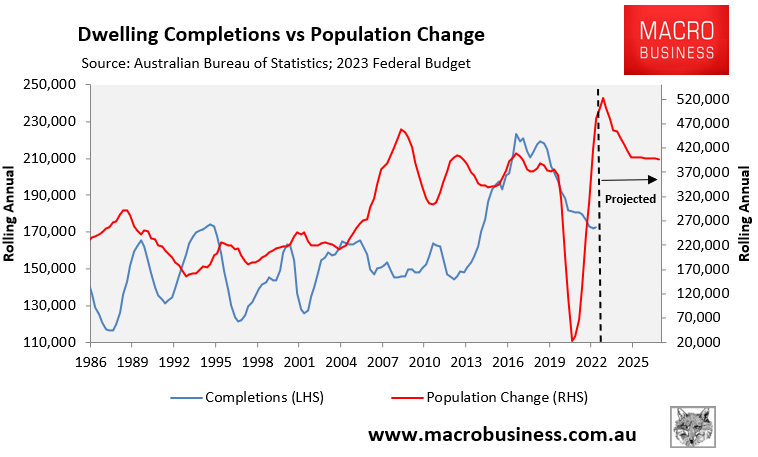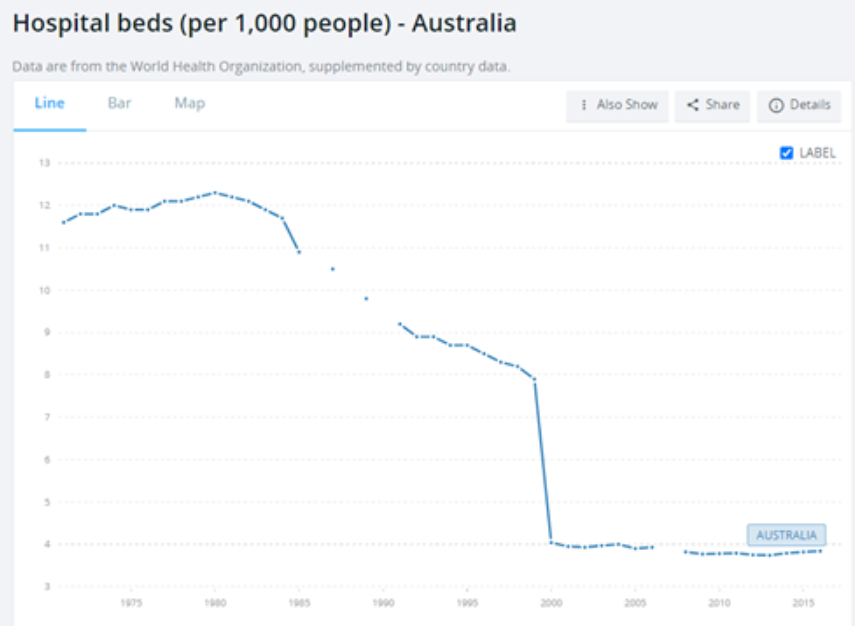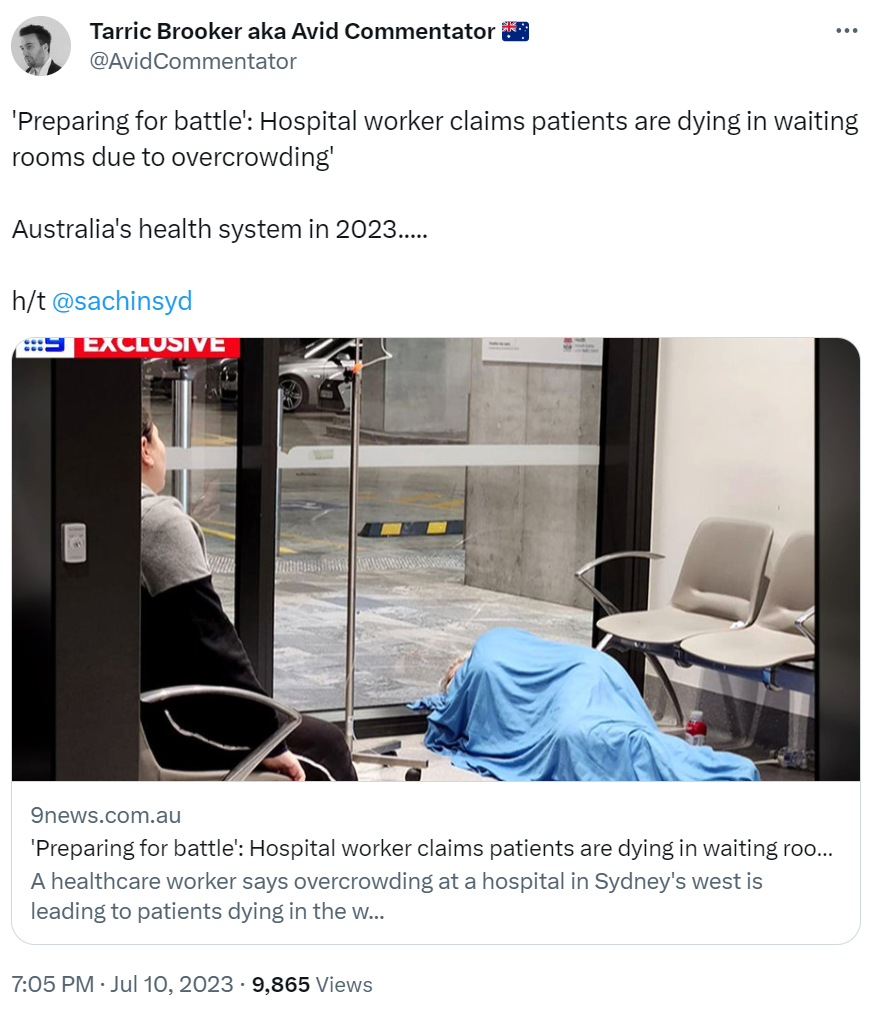Australia’s housing and rental crisis is well documented.
In a nutshell, Australia’s population is officially projected to balloon by 2.18 million people in the five years to 2026-27, driven by record net overseas migration of 1.5 million people over the same period.
Thus, Australia’s population will grow by a Perth’s worth of people in just five years, driven by an Adelaide’s worth of net overseas migration.
At the same time, Australia’s actual rate of dwelling construction is falling amid soaring materials, insurance and financing costs, meaning the nation’s housing shortage will continue to worsen:

The housing shortage is only one of the challenges, however. The overwhelming majority of the 1.5 million net overseas migrants will land in our major capital cities where infrastructure and services are already stretched.
Expect 60,000 to 70,000 more cars on the road for every 100,000 additional people. And, given our migrant’s lower salary profile, they won’t be driving $65,000-plus Teslas, much to the chagrin of wealthy inner-city Teals and Greens.
No, they are more likely to be driving early model, high-emission cars because that’s what they can afford.
Then there is Australia’s health system, which is already struggling under the current population size:

Australia hasn’t been building hospitals in line with population growth. So good luck building enough new hospitals for the Perth’s worth of population projected over the five years to 2026-27. That ain’t happening.
Tarric Brooker encapsulated the situation beautifully with the below Tweet:

“A healthcare worker says overcrowding at a hospital in Sydney’s west is leading to patients dying in the waiting room”, the article reads.
“They have died because the emergency department was so overcrowded that patients we have already seen have not moved on and we can’t treat new patients”, a healthcare worker said.
Similar overcrowding is happening with schools.
With all major cities now embracing increasing population density within current urban footprints, we will need to find more places for more students in existing areas. This inevitably means more overcrowding.
“Every extra million people (as for example predicted for each of our major capitals in just a few short years) will mean an extra 160,000 students. At a rough average school size of 400 students, that’s another 400 additional schools for each million of extra population”, Ross Elliott wrote in A Looming Schools Shortage.
The next drought will likely see Australia run short of reliable drinking water – made worse by millions of extra mouths to hydrate. So, the solution will be to build more energy guzzling desalination plants at the cost of billions of dollars.
This segways nicely into Australia’s energy shortage, which has been mostly driven by poor policy (especially around gas), but will be exacerbated by rising demand via extreme immigration.
Albo’s extreme immigration will make every one of these challenges worse. But like always, the many negative externalities caused by extreme immigration are ignored by the media, politicians, the business lobbies, and think tanks like the Grattan Institute.
Welcome to the everything shortage.

